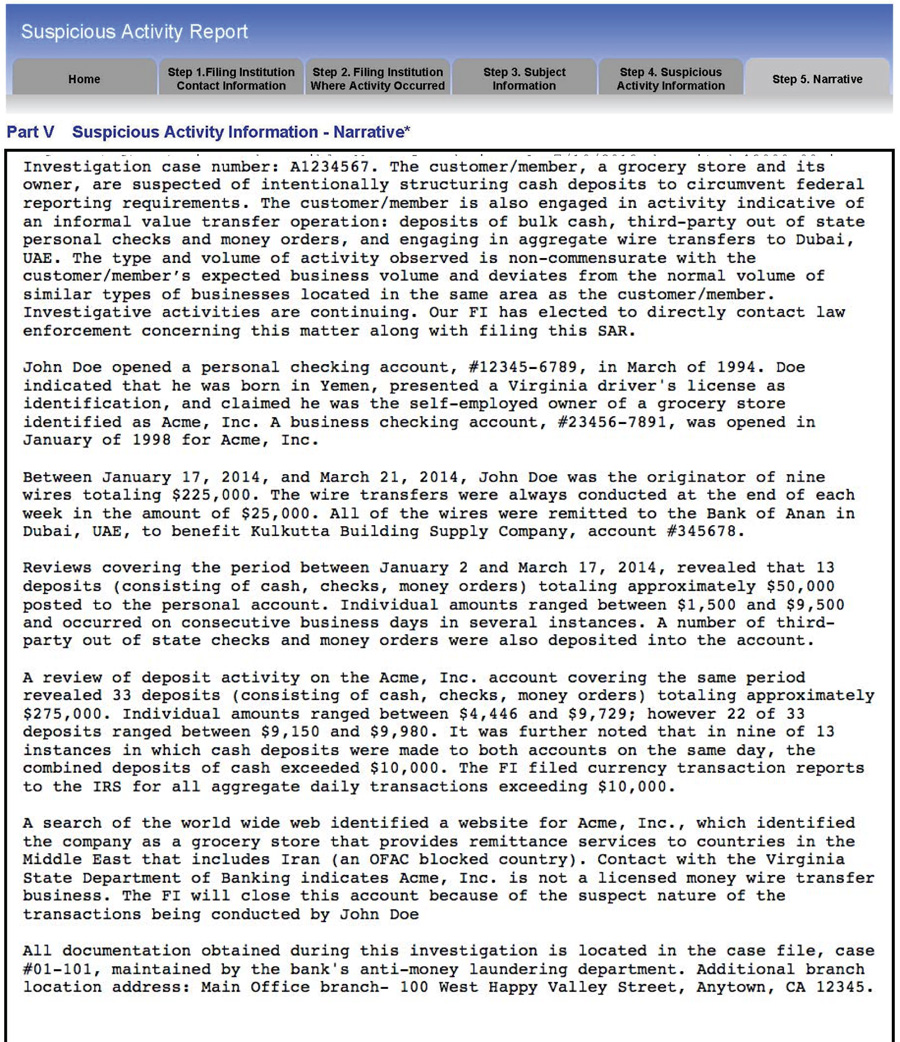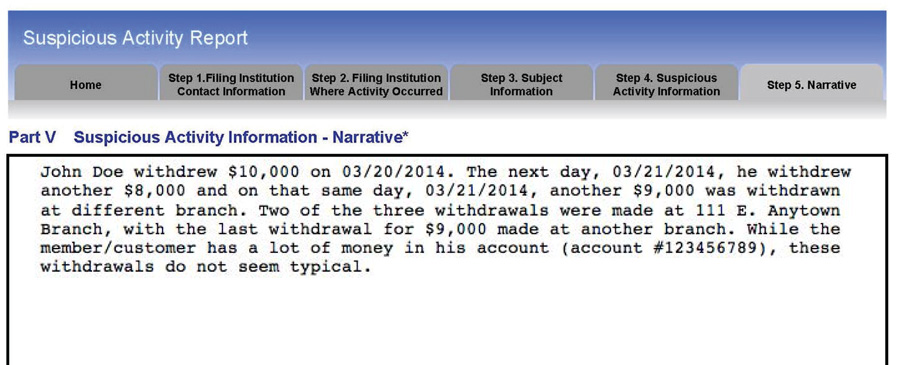 Consider your BSA program as one of the wheels that supports the vehicle that is your compliance program. Within this wheel, there are several smaller components—the rim, axle, and spokes could perhaps be considered due diligence, training, and suspicious activity monitoring. For BSA, one of these crucial pieces is the suspicious activity report (SAR) narrative.
Consider your BSA program as one of the wheels that supports the vehicle that is your compliance program. Within this wheel, there are several smaller components—the rim, axle, and spokes could perhaps be considered due diligence, training, and suspicious activity monitoring. For BSA, one of these crucial pieces is the suspicious activity report (SAR) narrative.
SAR narratives can be one of the more problematic areas of BSA compliance, but they are also an important tool for helping government authorities fight criminal financial activity. Missing, faulty, or broken SAR narratives could lead to potentially costly fines and an adverse impact on reputation, which is why it is crucial to make your SAR narrative as thorough as possible.
In part 1 of this two-part series, we detailed the elements of a properly completed SAR. In this post, we have prepared a good and a bad example of SAR narratives to see the guidance in action.
First, a poor example. Here is an example of what we might see in a SAR narrative (with identifying information removed):
This example has many things going against it, including two common errors: the lack of an introduction and a conclusion..
But let’s start with what it does give us. We know the exact amounts that are withdrawn and which days the transactions took place. However, the narrative does not detail the total amount or whether this was withdrawn in cash, in a check, or through another method. The total amount involved and the type of transactions involved are two very important details necessary to any SAR narrative.
Again, the body provides one of the branches’ information, but it is still missing information about the second branch.
A statement of why the institution considered the activity to be suspicious is present, but the statement does not go into full detail regarding the exact reason this activity triggered suspicion. Furthermore, we are missing a well-written and descriptive “who.”
One thing that can be helpful to keep in mind when writing a SAR narrative is to treat it as a stand-alone document. This means that you don’t assume the reader has reviewed the rest of the SAR, but rather that the first exposure he or she receives to the case is from your narrative. As such, you’d want to include not just the full name of John Doe, but a detailed description of who John Doe is.
You can see how easy it is to fall into the trap of writing a SAR narrative that does not include all of the necessary information! Let’s take a look at another example.

At a glance, we can see that this SAR narrative is considerably longer, which typically indicates a thorough narrative.
First of all, it includes a proper introduction with an explanation of how the activity was caught, the logic for the investigation, and an investigation number. It also has a detailed description of John Doe—from his occupation to his account number. It then goes on to detail the “what,” “when,” “where,” “why,” and “how” of the transaction. As you can see, the narrative also holds a conclusion that states what suspicious activity was identified, action the institution is planning on taking, and where the information is retained.
After reading through this narrative, the reviewer comes away knowing as much about the activity and customer/member as the institution. When writing a narrative, the goal is to never leave the person reading your SAR narrative with questions or to assume that he or she is as familiar with the investigation as you are.
A good rule of thumb is that if the SAR is not at least a few paragraphs long, you are probably missing some vital information. Too often, we see suspicious activity report narratives that are less of a narrative and more of a short paragraph. Remember, this isn’t something you have to write in 50 (or 100 or 200) words or less—and you probably shouldn’t.
Just as you wouldn’t drive a car without bolts or bearings (or whatever metaphor tickles your fancy), don’t let your BSA program embark without the critical component of descriptive SAR narratives.





